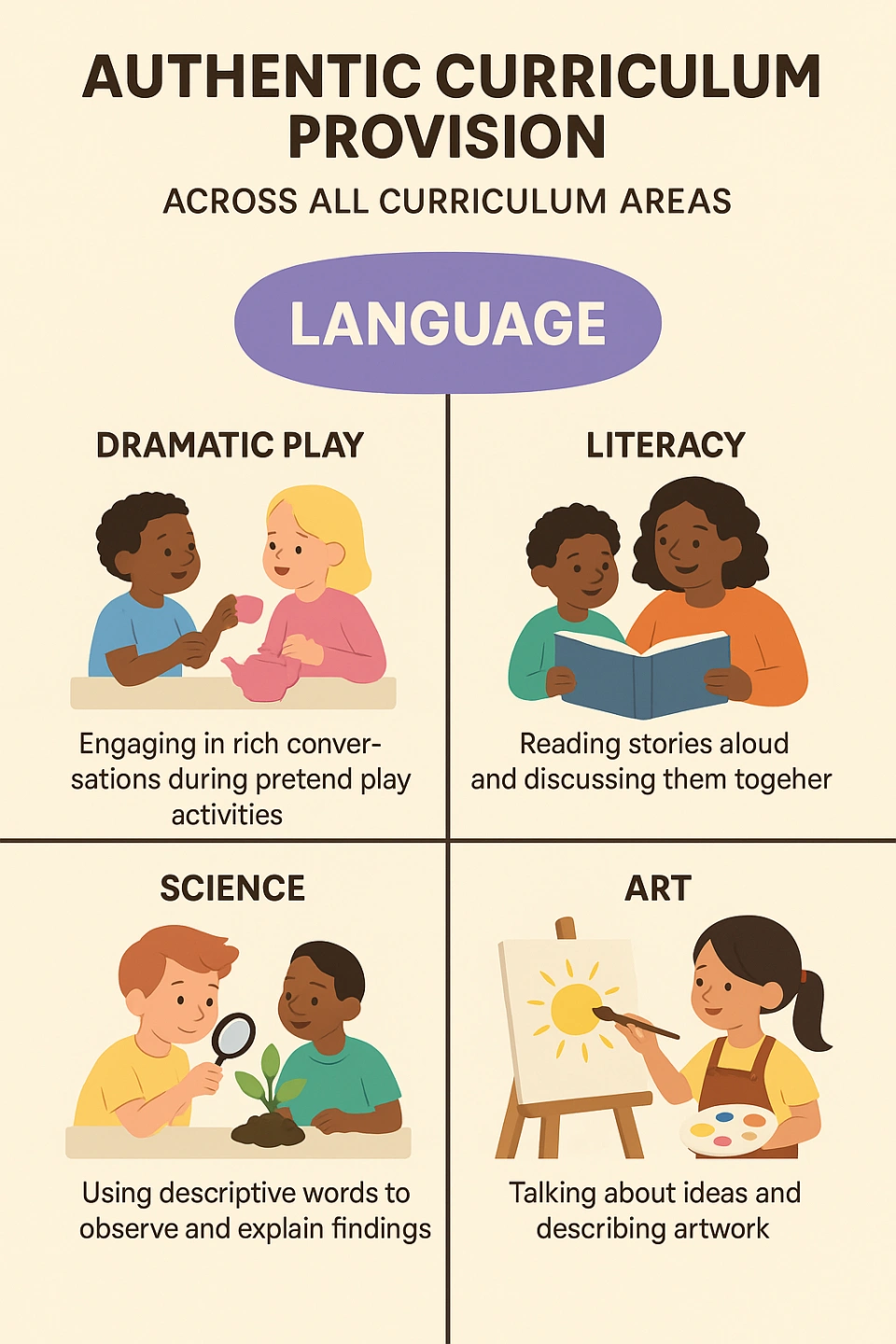
Language and literacy development in early years is a foundational domain that shapes their overall learning and wellbeing.
Language is the ability to understand and use spoken, written and nonverbal communication.
Literacy refers to the ability to read, write and understand written symbols (Department of Education, 2022).

Skills and Strategies for Supporting Children's Language Development
Babies begin by babbling, responding to tone, recognizing familiar voices, and noticing facial expressions and the rhythm of language. As toddlers grow, they start using words, forming phrases, and communicating through both speech and gestures. These early skills help children to express emotions, connect with others, and understand their world (Berk & Meyers, 2015).
As development continues, children build vocabulary, improve comprehension, gain phonological awareness, and begin early writing (Gunning, 2013).
Early childhood educators play a key role in supporting this growth. Through intentional, language-rich environments, where children are spoken to, listened to, and encouraged to express themselves, educators lay the foundation for lifelong communication and literacy (Fellowes & Oakley, 2020).
Language development in infants and toddlers is shaped by several key theories

Skinner’s Behaviorist Theory
Children learn language through imitation and reinforcement, for example, saying “milk” and receiving it encourages repeat use

Vygotsky’s Social Interactionist Theory
It highlights the role of interaction, where back-and-forth conversations with caregivers help expand vocabulary and understanding

Piaget’s Cognitive Development Theory
It suggests language grows alongside thinking, children learn words like “ball” through active exploration and linking words to meaning
Curriculum Provision

Photo
Learning Opportunities

0–12 Months (Infants)
Book Look Together
Goal: Encourage shared attention and vocabulary exposure
How: Use board books with high-contrast images and name objects or animals on each page
Focus: Listening, eye contact, word-object association

12–24 Months (Young Toddlers)
Animal Sounds Game
Goal: Practice imitation and sound-symbol association
How: Point to pictures or toys and ask, “What does the dog say?”
Focus: Imitation, sound awareness, memory

24–36 Months (Older Toddlers)
Object Sorting & Naming
Goal: Combine categorizing with language practice
How: Sort toys or objects by colour or type, naming each aloud with the child
Focus: Vocabulary, categories, word meaning
Activities Collection
Inanay Capuana
Incy Wincy Spider
Stay up & down game
Maisy Plays book
Old Mcdonald Farm Book
Zebra Who Lost His Stripes book